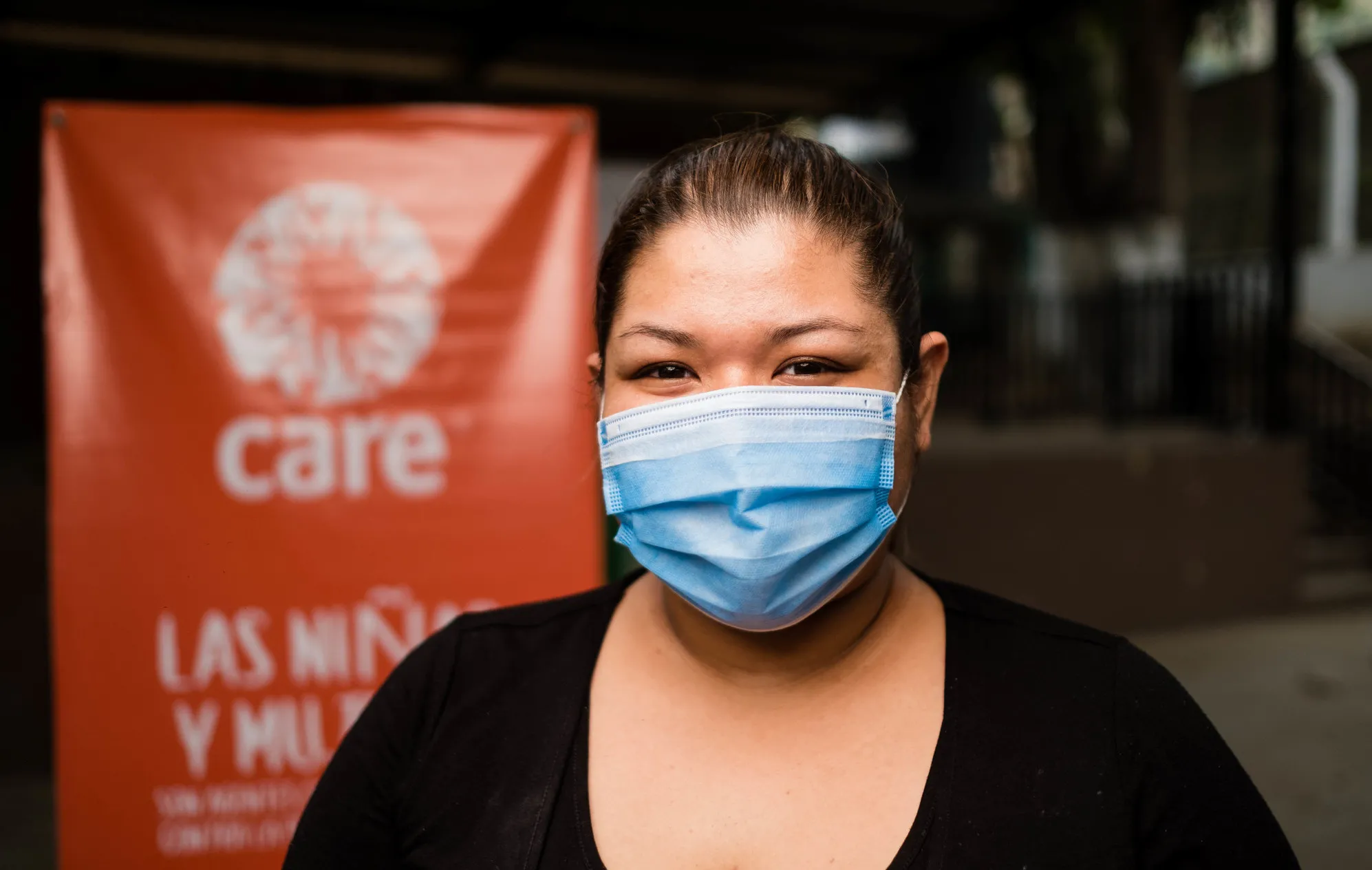This week marks six months since the World Health Organization declared COVID-19 a pandemic. It’s hard to believe both how long this has continued and that we have only been operating in pandemic mode for six months. Some days, it’s hard to remember what the world looked like before COVID-19.
COVID-19 has forced us all to change in ways we never imagined. For CARE, it has transformed the way we work in every country and every project. Not all change is bad–we’re getting smarter about working with local partners, finding ways to travel less, adapting faster, getting better at quickly analyzing and sharing data, and listening more to what people–especially women–tell us they need. Those changes can show us how to build a better world, and how to build a better CARE.
Let’s take a look at how our programming in COVID-19 has transformed CARE and our responses.
Working with women, communities, local NGOs, the private sector, governments, and the incomparable CARE staff around the world, we’ve launched new programs, found new ways to operate, and changed the kind of support we offer. With and for 18.6 million people in 67 countries, CARE is finding new ways to change the world.
What has changed the most since March?
- We’re reaching 49 times more people. From 380,000 people in 55 countries on March 20, by August 14, we were reaching 18.6 million people in 67 countries—nearly 50 times our initial response. In the whole year of FY19, we reached 13.3 million people directly in 63 countries with humanitarian responses, so COVID-19 alone reaches nearly 40% more people than CARE’s emergency responses last year.
- We’re using more cash. In COVID-19, we’re using cash responses in 35 countries, reaching more than 500,000 people—compared to only 10 countries using cash when we first started. That offers more flexible options and safer distribution for people around the world.
- We’re focused more on food and water. In March, only 9 countries were responding with food programming—and now 41 countries are supporting food and agriculture reaching more than 1.5 million people. In March, 35 countries were doing work about water, and by August it was 60 countries are reaching 2.6 million people with clean water and 1.8 million with hygiene kits.
- We’re doing more to prevent and respond to violence. By August, 55 countries were considering GBV response as part of their programs, compared to 8 countries in mid-March. We’re providing GBV services or referral to 3.4 million people. 19 countries have specific advocacy agendas to fight GBV as part of their COVID-19 response.
How are we getting there?
- Thinking more about advocacy. In March, only 15 countries had COVID-19 advocacy agendas. Now, 37 countries—more than double—are doing advocacy to get better COVID-19 responses for the people who need it most.
- Working with media. In March, we were reaching about 100 million people with mass media to raise awareness about COVID-19. Now, we’re reaching more than 198 million people with mass media. We’ve gotten creative about using radio, TV, social media, and other tools to reach millions of people with life-saving information.
- Listening to women. We’ve done Rapid Situation Analyses in 37 countries, and collected information from more than 6,200 women (and 4,000 men) to better understand women’s and girls’ experiences in COVID-19 and how to respond. In a regular year, CARE might do 7 RGAs, so this level is unprecedented, not just for CARE, but for the entire world. We’re also collecting sex-disaggregated data in 61 countries—compared to only 20 in March. This information is crucial to shaping our responses so they are more effective.
- Using technology: 41 countries are using new digital solutions, from building apps to taking advantage of text messages to communicate with participants, to holding digital forums and marketplaces.

